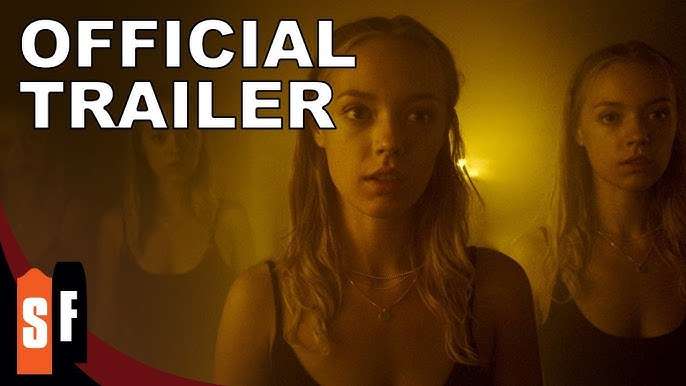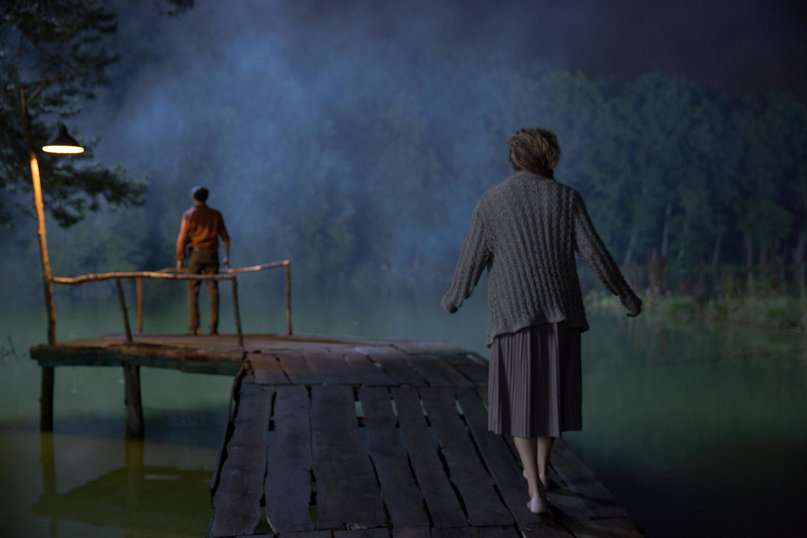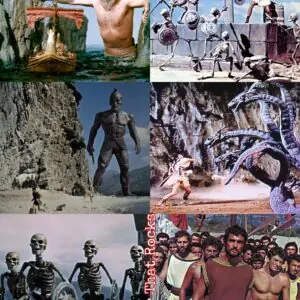Introduction
Mermaid: The Lake of the Dead (Rusalka: Ozero myortvykh) is a 2018 Russian horror-fantasy film directed by Svyatoslav Podgaevskiy, who is known for his work in the Viy (2014) remake and The Bride (2017). The film blends Slavic folklore with modern horror elements, presenting a dark and eerie take on the mermaid myth. Unlike the Western portrayal of mermaids as enchanting sea creatures, this film draws from Eastern European legends of rusalki—vengeful spirits of drowned women who lure men to their deaths.
With a runtime of 85 minutes, Mermaid: The Lake of the Dead delivers a chilling atmosphere, strong visuals, and a tragic love story at its core. However, it also suffers from some narrative inconsistencies and pacing issues. This review will analyze the film’s strengths and weaknesses, covering its plot, performances, cinematography, themes, and overall effectiveness as a horror film.
Plot Summary
The film follows Roman (Efim Petrunin), a young man engaged to marry his girlfriend, Alisa (Sofya Shidlovskaya). However, their relationship is disrupted when Roman begins experiencing strange visions of a mysterious woman near a lake. It is soon revealed that this woman is Marina (Viktoriya Agalakova), a rusalka (a Slavic mermaid spirit) who drowned years ago after being betrayed by her lover.

Marina has haunted the lake ever since, luring men to their deaths. She fixates on Roman, believing him to be the reincarnation of her lost love. As Roman becomes increasingly obsessed with her, Alisa must uncover the truth behind Marina’s curse before it’s too late. The story unfolds with supernatural encounters, eerie dream sequences, and a tragic backstory that fuels the horror.
Analysis

1. Atmosphere & Visuals
One of the film’s strongest aspects is its haunting atmosphere. The cinematography by Anton Zenkovich effectively creates a sense of dread, using cold blue tones and misty lake landscapes to evoke an otherworldly feel. The underwater sequences are particularly striking, with Marina’s ghostly figure floating ominously in the depths.
The creature design for Marina is also well-executed. Unlike traditional mermaids, she appears as a pale, waterlogged corpse with long, tangled hair—much closer to the original Slavic folklore. Her movements are eerie and unnatural, enhancing the horror elements.
2. Performances

Viktoriya Agalakova delivers a standout performance as Marina, capturing both the tragic and terrifying aspects of the character. Her expressive eyes and unsettling presence make her a compelling antagonist. Efim Petrunin convincingly portrays Roman’s descent into obsession, though his character’s decisions sometimes feel frustratingly irrational. Sofya Shidlovskaya’s Alisa serves as the emotional anchor of the film, though her role is somewhat underdeveloped.
3. Themes & Folklore
The film explores themes of love, betrayal, and vengeance. Marina’s backstory is tragic—she was a young woman drowned due to a lover’s deceit, and her spirit now seeks revenge on men who cross her path. This aligns with traditional rusalka myths, where these spirits are often victims of violence who return as malevolent entities.
However, the film occasionally falters in its mythological consistency. While it effectively establishes Marina’s curse, some of the supernatural rules (such as how she possesses victims) are unclear. A deeper exploration of Slavic folklore could have enriched the narrative.
4. Pacing & Narrative Structure
The film’s pacing is uneven. The first half builds tension well, with eerie dream sequences and a slow-burning mystery. However, the second half rushes toward the climax, leaving some plot points unresolved. Certain character motivations (particularly Roman’s sudden obsession with Marina) could have been better developed.
Additionally, the ending feels abrupt. Without spoiling it, the resolution leaves some questions unanswered, which may frustrate viewers expecting a more conclusive finale.
5. Horror Elements
Mermaid: The Lake of the Dead relies more on psychological horror and atmosphere than jump scares. The horror stems from the inevitability of Marina’s curse and Roman’s growing detachment from reality. There are some genuinely creepy moments, such as Marina’s appearances in reflections and her ghostly whispers.
However, the film could have been more intense. Some scenes feel restrained, holding back from fully embracing the gruesome potential of the rusalka myth. A few more visceral horror sequences could have elevated the fear factor.
Comparison to Other Mermaid Horror Films
This film stands apart from other mermaid-themed horror movies like The Lure (2015) or She Creature (2001) by grounding itself in Eastern European folklore rather than Western interpretations. It shares similarities with The Ring (2002) in its use of a vengeful female spirit tied to water, but its aesthetic is distinctly Russian.
Compared to Podgaevskiy’s previous works (Viy, The Bride), this film is more focused on psychological horror than outright gothic terror. It’s less action-driven and more atmospheric, which may appeal to fans of slow-burn horror.
Strengths & Weaknesses
Strengths:
-
Strong visual style & cinematography
-
Effective use of folklore
-
Viktoriya Agalakova’s haunting performance
-
Eerie, dreamlike atmosphere
Weaknesses:
-
Uneven pacing & rushed climax
-
Underdeveloped character motivations
-
Some mythological inconsistencies
-
Abrupt ending
Final Verdict
Mermaid: The Lake of the Dead is a visually stunning and atmospheric horror film that offers a fresh take on mermaid mythology. While it suffers from narrative flaws and pacing issues, its eerie tone, strong lead performance, and unique folklore-inspired story make it worth watching for fans of supernatural horror.
Rating: 7/10 – A chilling, if imperfect, dive into Slavic mermaid lore.





